Key Highlights:
Ambitious Vision: Bharat 6G Vision targets positioning India as global 6G leader by 2030, capturing 10% of global patents and contributing USD 1.2 trillion to GDP by 2035
Solid Foundation: India deployed 4.69 lakh 5G base stations in just over two years (fastest globally), covering 99.6% of districts with 250+ million subscribers
Innovation Momentum: Over 127 global 6G patents granted to Indian innovators; 104 TTDF-funded projects worth ₹275.88 crore; 100 5G labs in academic institutions
Global Collaboration: MoUs with NextG Alliance (US), 6G-IA (EU), 6G Flagship (Finland), and others; New Delhi Declaration endorsed by 9 global alliances recognizing 6G as global public good
Strategic Roadmap: Two-phase mission—Phase 1 (2023-2025) focuses on research and IP creation; Phase 2 (2026-2030) targets commercialization and deployment
From 5G Success to 6G Ambition: A Bold Technological Leap
While most nations are still rolling out 5G networks, India has already set its sights on an even more audacious goal—becoming a global leader in 6G technology by 2030. This isn’t merely aspirational rhetoric. With the Bharat 6G Vision document released in March 2023, India has laid out a comprehensive roadmap to transition from being a technology consumer to a technology creator and exporter. investindia.gov
The stakes couldn’t be higher. Sixth-generation wireless technology promises speeds 1,000 times faster than 5G—potentially exceeding 1 terabit per second (Tbps)—along with ultra-low latency measured in microseconds, integrated sensing and communication capabilities, and native artificial intelligence. These aren’t incremental improvements; they represent a fundamental reimagining of connectivity that will reshape economies, societies, and geopolitical power dynamics.
India’s confidence stems from a solid foundation. The country achieved one of the fastest 5G rollouts globally, deploying 4.69 lakh (469,000) base transceiver stations by February 2025—just over two years after launching 5G services in October 2022. This remarkable infrastructure expansion now covers 99.6% of districts across all states and union territories, reaching over 250 million 5G subscribers. bharatnet
The Bharat 6G Vision: Principles and Objectives
Affordability, Sustainability, and Ubiquity
The Bharat 6G Vision rests on three foundational principles: affordability, sustainability, and ubiquity. Unlike previous technological transitions where India often played catch-up, this vision positions the nation as a co-creator of global standards from the outset.
Affordability ensures that advanced connectivity doesn’t become an urban elite privilege but reaches every corner of the nation—from metropolitan centers to remote tribal villages. Sustainability addresses the environmental footprint of exponentially growing data consumption, mandating energy-efficient networks and green technology integration. Ubiquity promises seamless coverage through integration of terrestrial networks with satellite and high-altitude platform systems.
Design, Develop, Deploy—Indigenously
The vision explicitly aims to “design, develop, and deploy 6G network technologies” indigenously. This marks a philosophical shift from licensing foreign technology to building homegrown intellectual property. Minister of Communications Ashwini Vaishnaw announced in March 2023 that India had already secured over 127 global patents for 6G technology—a testament to burgeoning domestic innovation capacity.
The ultimate targets are ambitious yet specific: capturing 10% of global 6G patents and contributing an estimated USD 1.2 trillion to India’s GDP by 2035. The satellite communications market alone is projected to triple by 2033, creating vast opportunities for Indian companies.
6G Technology: Revolutionary Capabilities
Ultra-High-Speed Connectivity
If 5G promises speeds of 40-1,100 Mbps, 6G aims for 1 terabit per second—literally 1,000 times faster at the upper end. This isn’t just about downloading movies faster; it enables entirely new categories of applications impossible with current technology. pib.gov

Integrated Sensing and Communication (ISAC)
6G networks won’t just transmit data—they’ll sense the environment. Integrated Sensing and Communication allows networks to perform radar-like functions, detecting objects, measuring distances, and monitoring conditions without separate sensor infrastructure. Applications range from autonomous vehicles coordinating movements to disaster response systems tracking environmental changes in real-time.
Native AI and Machine Learning
Unlike 5G where AI was added later, 6G will have artificial intelligence baked into the network architecture from the ground up. AI-native networks can dynamically optimize resource allocation, predict traffic patterns, autonomously detect and mitigate security threats, and personalize user experiences at unprecedented scales.
Non-Terrestrial Networks (NTN)
Seamless integration of terrestrial base stations with satellites, drones, and high-altitude platforms ensures truly global coverage. This addresses India’s geographical challenges—remote islands, mountainous terrains, and sparsely populated areas—where traditional infrastructure is economically unviable.
Advanced Applications
The technological capabilities enable science-fiction-like applications: holographic communication allowing life-size 3D telepresence, ambient intelligence where environments respond intuitively to human needs, terahertz communications utilizing previously unused spectrum bands, and digital twins creating virtual replicas of physical systems for simulation and optimization.
Bharat 6G Mission: A Two-Phase Strategic Roadmap
Phase 1 (2023-2025): Research and Foundation
The initial phase focuses on fundamental research, intellectual property creation, and proof-of-concept development. Key activities include establishing testbeds for experimental validation, conducting pre-standardization work to influence global protocols, fostering industry-academia collaboration, and building human capital through training programs
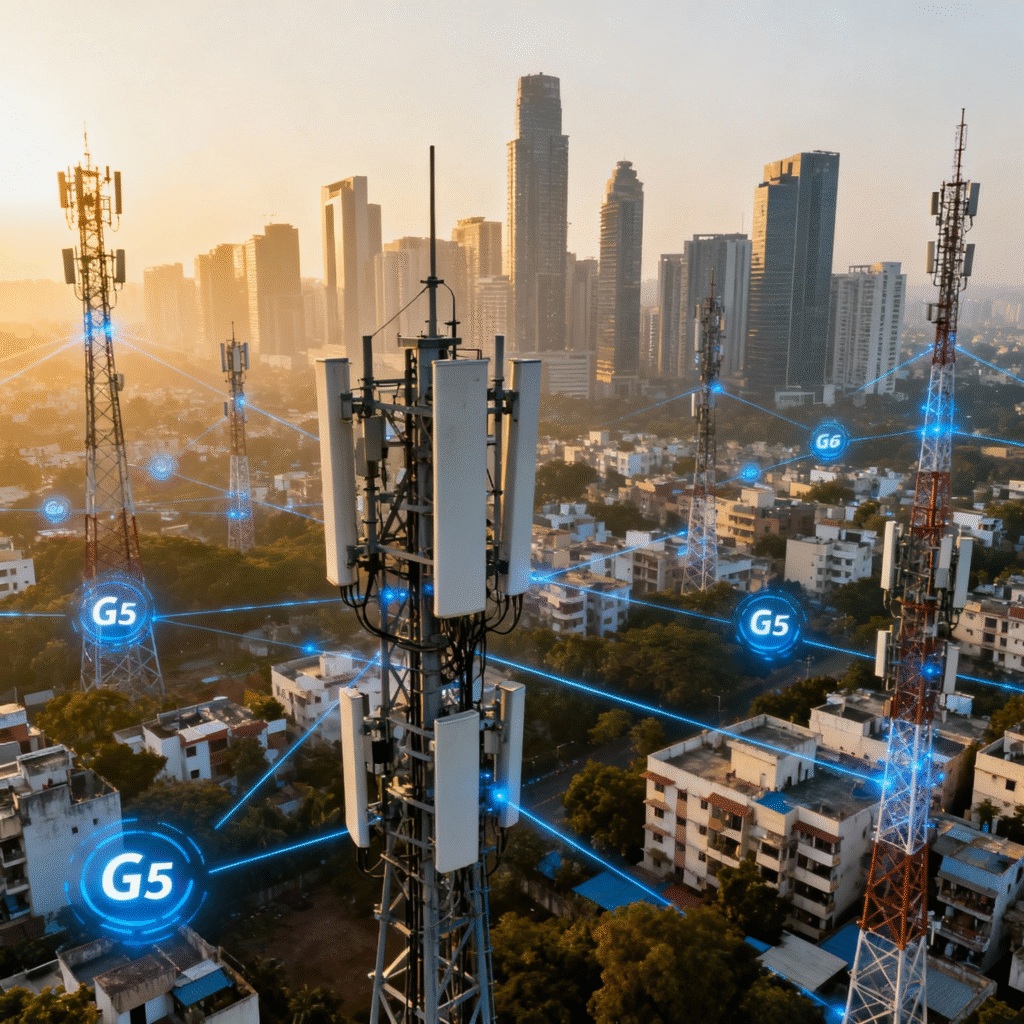
As of July 2025, the Telecom Technology Development Fund (TTDF) had sanctioned 104 projects worth ₹275.88 crore spanning the 6G ecosystem. These projects explore diverse areas including spectrum management, network architecture, advanced antenna systems, and application development.
Two critical testbeds have been established: the 6G Terahertz (THz) Testbed for exploring ultra-high-frequency communications and the Advanced Optical Communication Testbed for next-generation fiber and free-space optical systems. Additionally, 100 5G labs were set up in academic institutions across India during FY 2023-24 to build a 6G-ready ecosystem supporting students, startups, and researchers.
Phase 2 (2026-2030): Commercialization and Deployment
The second phase transitions from research to market readiness. Activities include developing globally viable 6G concepts and use cases, building commercially deployable systems and products, establishing regulatory and ethical frameworks, and launching commercial 6G services by 2030.
This timeline aligns with the International Telecommunication Union’s (ITU) IMT-2030 framework, which envisions 6G standardization and deployment globally by the end of the decade.
Institutional Framework: Coordinating the 6G Ecosystem
Technology Innovation Group on 6G (TIG-6G)
Constituted on November 1, 2021, TIG-6G serves as the strategic body under the Department of Telecommunications coordinating India’s 6G efforts. The group includes members from various ministries, R&D institutions, academia, standardization bodies, telecom service providers, and industry.
TIG-6G established six specialized Task Forces addressing multidisciplinary innovative solutions, multiplatform next-generation networks, spectrum requirements, device ecosystems, international standards contribution, and funding mechanisms for R&D. dot.gov
Bharat 6G Alliance (B6GA)
Launched in July 2023, the Bharat 6G Alliance is a collaborative platform bringing together over 80 member organizations including 30+ startups, along with public and private companies, academia, research institutions, and standards development bodies.
The Alliance serves multiple functions: fostering consensus on business and societal needs for 6G, driving high-impact R&D initiatives, forging partnerships with global 6G alliances, and contributing to international standardization efforts.
At the India Mobile Congress 2025, B6GA released four critical whitepapers: Spectrum Roadmap for 6G in India, Powering Next-Gen Telecom, AI and Network Evolution to 5G, and 6G Architecture Security and Exposure Framework for RF Sensing. These documents provide strategic direction for India’s 6G journey.
Technology Innovation Hub (TIH) at IIIT Bangalore
Established under the National Mission on Interdisciplinary Cyber-Physical Systems (NM-ICPS), this hub focuses exclusively on Advanced Communication Systems. Research priorities include Reconfigurable Intelligent Surfaces (RIS) that dynamically optimize signal propagation, Advanced O-RAN Massive MIMO systems enabling flexible, vendor-neutral network architectures, and integrated communication and sensing capabilities.
The TIH bridges academia, startups, and industry, ensuring cutting-edge research translates into deployable technologies.
Global Collaboration: Building Strategic Partnerships
Memoranda of Understanding with Leading 6G Alliances
India hasn’t adopted an isolationist approach. Recognizing that 6G standards will be global, the Bharat 6G Alliance has signed MoUs with leading international bodies: NextG Alliance (United States), 6G-IA (European Union), 6G Flagship (Finland/University of Oulu), UK Telecommunications Innovation Network (UK TIN), 6G Forum (South Korea), and alliances in Japan, Brazil, and Germany.
These partnerships facilitate alignment of R&D priorities, joint development of security and trust frameworks, strengthening resilient supply chains, and enabling global digital inclusion.
The 6G Flagship and Bharat 6G Alliance MoU, signed in June 2024, exemplifies this cooperation—combining Finland’s technological prowess with India’s massive market scale and engineering talent.
The New Delhi Declaration: 6G as a Global Public Good
At the International Bharat 6G Symposium 2025 held during India Mobile Congress, nine prominent global organizations signed the New Delhi Declaration—a landmark joint statement recognizing 6G as a global public good.
The declaration articulates five core principles that should guide 6G development worldwide:
Trusted and Secure: Networks designed with security and privacy at their core, protecting users from cyber threats and surveillance
Resilient and Reliable: Systems that maintain functionality even under adverse conditions including natural disasters, attacks, or equipment failures
Open and Interoperable: Standards promoting multi-vendor compatibility, preventing vendor lock-in, and enabling innovation
Inclusive and Affordable: Technology accessible to all socioeconomic segments across urban and rural areas, ensuring digital equity
Sustainable and Globally Connected: Energy-efficient networks integrating terrestrial and non-terrestrial systems for universal coverage while minimizing environmental impact
Signatories beyond Bharat 6G include NextG Alliance (ATIS), 6G-IA, 6G Flagship, 6G Forum, XGMF (Japan), UK TIN, UK Federated Telecoms Hubs, 6G Brasil, and UKI-FNI.
India-US 6G Partnership
At the G20 Summit 2023, India and the United States formalized a strategic partnership on 6G research and development. The joint statement launched two Joint Task Forces on advanced telecommunications focused on Open RAN and R&D in 5G/6G technologies.
Public-private cooperation is led by India’s Bharat 6G Alliance and the U.S. Next G Alliance, with activities including Open RAN field trials and rollouts in both countries, joint standards development, facilitating access to chipsets for system development, and establishing collaborative R&D projects.
U.S. International Development Finance Corporation (DFC) backing supports scaled deployments. The partnership also emphasizes establishing a “Trusted Network/Trusted Sources” bilateral framework addressing supply chain security concerns.
Strategic Importance
Economic Impact and GDP Contribution
The projected USD 1.2 trillion contribution to India’s GDP by 2035 represents approximately 15-20% of the nation’s current GDP. This economic impact stems from direct telecom infrastructure investment, growth of digital services and applications, productivity gains across sectors, and export revenues from indigenous equipment and software.
6G will catalyze transformation across industries: agriculture benefiting from precision farming with real-time soil and crop monitoring, healthcare enabling remote surgeries and continuous patient monitoring, education delivering immersive virtual classrooms, manufacturing advancing through digital twins and predictive maintenance, and transportation coordinating autonomous vehicles at scale.
Technological Self-Reliance (Atmanirbhar Bharat)
6G leadership aligns perfectly with Atmanirbhar Bharat objectives. India’s development of an indigenous 4G stack provides the foundation, with over one lakh (100,000) Made-in-India 4G towers deployed domestically. This 4G technology is now being exported, with countries expressing interest in Indian telecom equipment.
The transition from 4G success to 5G rapid deployment and now 6G R&D leadership demonstrates India’s ascending technological trajectory. Capturing 10% of global 6G patents would mark India as a true innovation powerhouse, not just a manufacturing base.
National Security and Data Sovereignty
Telecommunications infrastructure constitutes critical national security infrastructure. Foreign dependence creates vulnerabilities—surveillance risks, supply chain disruptions during geopolitical tensions, and backdoor access concerns.
Indigenous 6G capabilities ensure secure communications for defense and intelligence agencies, protection of citizen data within national jurisdiction, resilience against foreign supply chain manipulation, and strategic autonomy in technology policy.
The emphasis on “trusted and secure” networks in the New Delhi Declaration reflects global recognition of these security imperatives.
Digital Inclusion and Rural-Urban Divide
India’s digital divide remains stark—internet penetration varies dramatically between urban and rural areas. 6G’s integration of terrestrial and non-terrestrial networks promises ubiquitous coverage reaching the most remote regions.
Satellite-terrestrial network integration can deliver high-speed connectivity to islands like Andaman & Nicobar and Lakshadweep, mountainous regions in the Himalayas and Northeast, tribal areas across central India, and disaster-prone zones where terrestrial infrastructure is vulnerable.
This aligns with Sustainable Development Goal 9 (Industry, Innovation, and Infrastructure) and contributes to achieving the Viksit Bharat 2047 vision of inclusive development.
Defense and Security Applications
Military Modernization
6G technology will revolutionize military capabilities. Ultra-low latency enables real-time coordination of drone swarms, augmented and virtual reality systems for training and battlefield visualization, autonomous weapons systems with instantaneous decision-making, and secure, jamming-resistant military communications.
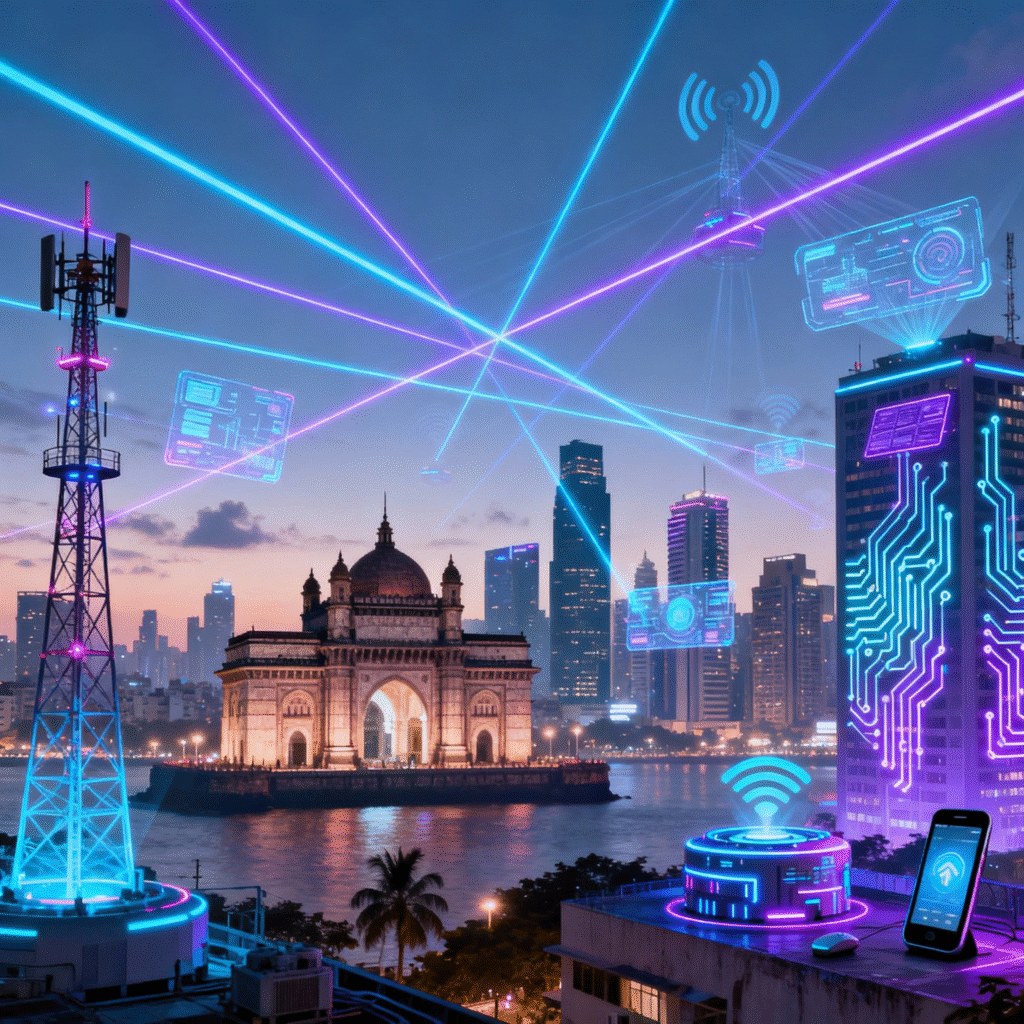
Space and Underwater Domains
India’s strategic interests span from the Himalayas to the Indian Ocean. 6G’s sensing capabilities and non-terrestrial network integration enhance surveillance and reconnaissance in contested spaces, submarine detection and underwater communication, satellite constellation coordination, and missile tracking and defense systems.
Next-Generation Defense Technologies
India aims to become a global supplier of defense technologies. Indigenous 6G-enabled systems—advanced drones, robotics, and AI-powered defense platforms—can position India as an exporter to friendly nations, reducing dependence on traditional arms suppliers.
Seamless integration of terrestrial and non-terrestrial networks ensures comprehensive coverage across land, sea, air, and space domains—critical for multi-domain operations.
Challenges and Concerns
R&D Investment and Infrastructure Costs
Developing 6G from scratch demands massive sustained investment. Current TTDF allocation of ₹275.88 crore for 104 projects, while significant, pales compared to the billions China, South Korea, and the United States are investing.
Establishing advanced testbeds, attracting and retaining top research talent, conducting large-scale field trials, and transitioning from lab prototypes to commercial products all require exponentially greater funding.
Spectrum Allocation and Standardization
6G will likely utilize terahertz frequencies (100 GHz – 10 THz) largely unallocated today. Securing international spectrum allocations through ITU processes involves complex negotiations where geopolitical influence matters.
India must actively participate in 3GPP (3rd Generation Partnership Project) and ITU-R standardization bodies, build consensus around Indian proposals, and balance national interests with global interoperability requirements.
The B6GA whitepaper on “Spectrum Roadmap for 6G in India” addresses these challenges, but execution remains demanding.
Energy Efficiency and Sustainability
6G networks consuming vastly more energy than 5G could undermine climate commitments. Each new generation historically increased energy consumption despite efficiency improvements, because capacity growth outpaces efficiency gains.
Mandatory sustainability standards, renewable energy-powered base stations, AI-optimized power management, and circular economy principles for network equipment are essential but add complexity and cost.
Skill Development and Capacity Building
Advanced technologies require specialized expertise spanning quantum communications, terahertz engineering, AI/ML for network optimization, advanced materials science, and cybersecurity.
India’s education system must rapidly adapt curricula, expand advanced degree programs in relevant fields, facilitate industry-academia collaboration, and provide continuous upskilling for existing professionals.
The 100 5G labs in academic institutions represent a start, but scaling to produce tens of thousands of 6G-capable engineers annually demands systemic educational transformation.
Ethical, Regulatory, and Public Awareness
6G’s capabilities raise profound ethical questions: privacy implications of ubiquitous sensing, algorithmic bias in AI-native networks, digital surveillance potentials, and equitable access across socioeconomic strata.
Regulatory frameworks must be developed proactively, not reactively. Public awareness and stakeholder engagement ensure technologies serve societal needs rather than narrow commercial interests.
Comparative Analysis: India’s Global Position
Learning from 5G Leaders
China deployed over 4 million 5G base stations by 2024, dwarfing other nations. South Korea achieved rapid nationwide coverage leveraging compact geography. The United States focused on millimeter-wave deployment for ultra-high speeds in urban centers.
India’s approach balances these models—extensive deployment like China (469,000 stations in just over two years), strategic urban focus, and emphasis on indigenous technology reducing foreign dependence.
From Consumer to Creator
Historically, India adopted technologies developed elsewhere—2G, 3G, and even 4G were largely imported. The shift began with indigenous 4G stack development and accelerated with 5G rapid deployment.
6G represents India’s bid to co-create global standards from inception, not merely implement them. The 127+ patents, though modest compared to China’s thousands, demonstrate growing innovation capacity.
Countries like the United States are now interested in acquiring 6G technology from India—a reversal of historical patterns.
Export Readiness
India’s indigenous 4G equipment is being exported to neighboring countries. If 6G technology proves competitive, India could capture significant global market share, especially in developing nations prioritizing affordability.
This positions India not just as a large domestic market but as a technology exporter, fundamentally altering its role in the global technology ecosystem.
Policy Recommendations and Way Forward
Sustained Government Funding
A dedicated 6G Development Fund with multi-year commitments exceeding ₹10,000 crore would provide stability for long-term research. Tax incentives for private sector R&D investment, public-private partnership models for testbed development, and performance-linked grants rewarding successful innovations could amplify impact.
Industry-Academia-Government Collaboration
Formalize mechanisms beyond ad-hoc partnerships: joint professorships allowing industry experts to teach, sponsored PhD programs on 6G topics, industry access to academic testbeds and vice versa, and collaborative patent filing with shared ownership.
The TIH model at IIIT Bangalore should be replicated across IITs, NITs, and other premier institutions.
Accelerate Testbed Development
Current testbeds must scale rapidly. Establish regional 6G testbed clusters in Bengaluru, Hyderabad, Delhi NCR, and Chennai, provide open access to researchers and startups, conduct regular proof-of-concept competitions, and facilitate international collaborative trials.
Strengthen International Partnerships While Protecting IP
Balance openness with strategic protection. Actively participate in global standardization forums, share non-critical research to build goodwill, protect critical innovations through patents before disclosure, and negotiate technology transfer agreements that benefit India.
The MoUs with NextG Alliance, 6G-IA, and others must translate into substantive collaborative projects with measurable outcomes.
Comprehensive Regulatory Framework
Develop frameworks addressing spectrum allocation and pricing, network security and data protection, environmental sustainability standards, ethical AI usage in networks, and consumer protection in 6G services.
Early regulatory clarity reduces uncertainty for investors and innovators.
Human Resource Development
Launch a National 6G Skilling Mission introducing 6G concepts in undergraduate engineering curricula, establishing specialized M.Tech and PhD programs, offering scholarships for 6G research, and creating online courses for practicing professionals.
Partner with global universities for student and faculty exchanges, bringing international expertise to India while exposing Indian researchers to global best practices.
Conclusion: From Aspiration to Global Authority
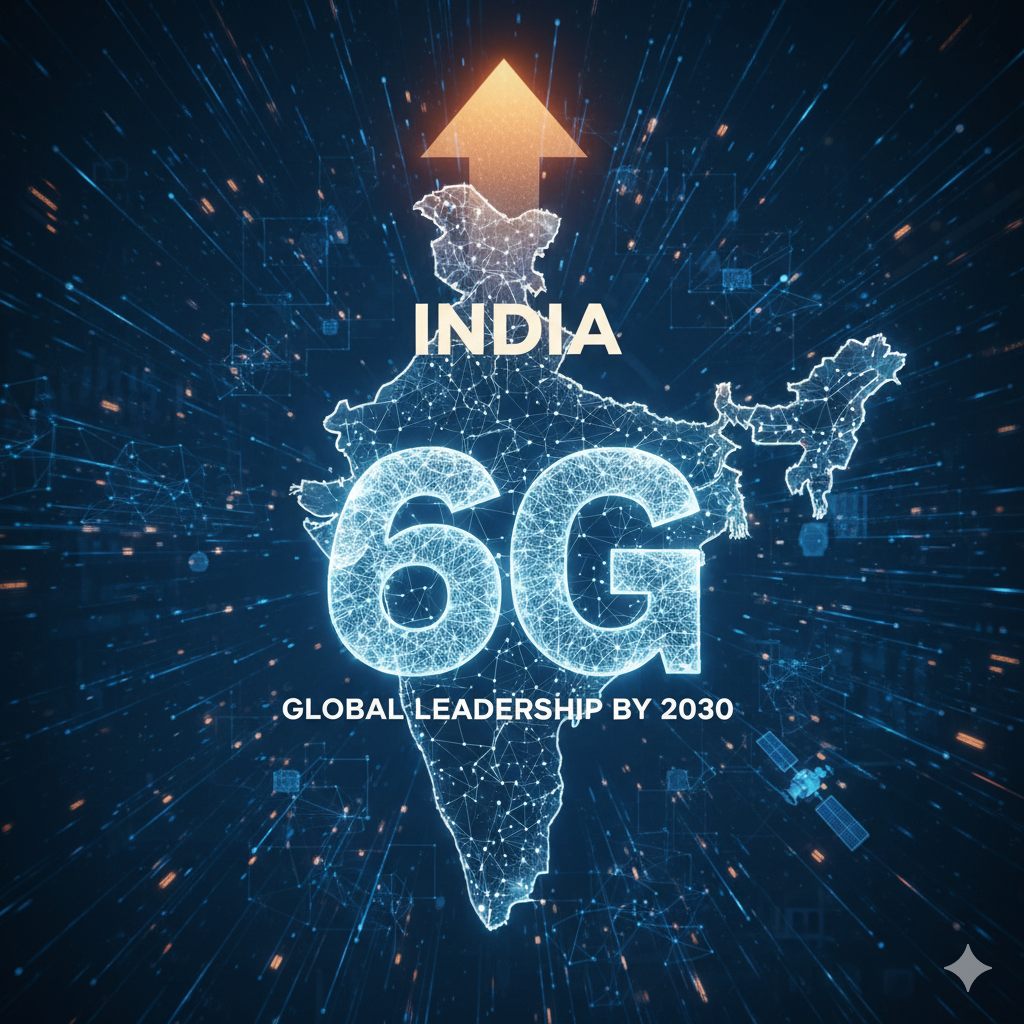
India stands at a civilizational inflection point. The question posed by this article—Can India really lead the world in 6G by 2030?—isn’t rhetorical. The answer depends on choices made today and sustained over the next five years.
The foundation is undeniably strong. The fastest 5G rollout globally, indigenous 4G stack export-ready, 127+ patents demonstrating innovation capacity, and political will at the highest levels provide momentum. The Bharat 6G Alliance bringing together 80+ organizations, international partnerships with leading global bodies, and clear institutional frameworks through TIG-6G and dedicated testbeds create an enabling ecosystem.
Yet formidable challenges loom. China’s decades-long head start and massive investments, the United States and Europe’s technological depth and R&D infrastructure, and South Korea and Japan’s advanced semiconductor ecosystems represent fierce competition. India must overcome funding constraints, talent retention issues, and bureaucratic inefficiencies that have historically slowed technology transitions.
The New Delhi Declaration’s vision of 6G as a global public good—trusted, secure, open, interoperable, inclusive, affordable, and sustainable—offers a powerful framework. If India can champion these principles while developing competitive technology, it positions itself not just as a market but as a moral and technological leader shaping how humanity connects in the 2030s and beyond.
The prize is immense: a USD 1.2 trillion economic contribution, hundreds of thousands of high-skill jobs, strategic autonomy in critical infrastructure, and enhanced national security through indigenous defense technologies. Failure, conversely, means continued dependence on foreign technology, vulnerability to supply chain disruptions, and missing the opportunity to lead in a defining technology of the 21st century.
The transition from 2G/3G consumer to 4G producer to 5G rapid deployer to 6G co-creator represents an extraordinary evolution compressed into two decades. Sustaining this trajectory demands unwavering political commitment, visionary public-private collaboration, sustained multi-year investments, and cultivation of world-class research talent.
Viksit Bharat 2047—the vision of a developed India by its centenary of independence—cannot be realized without technological leadership. 6G isn’t merely about faster internet; it’s about whether India will shape the future or be shaped by it.
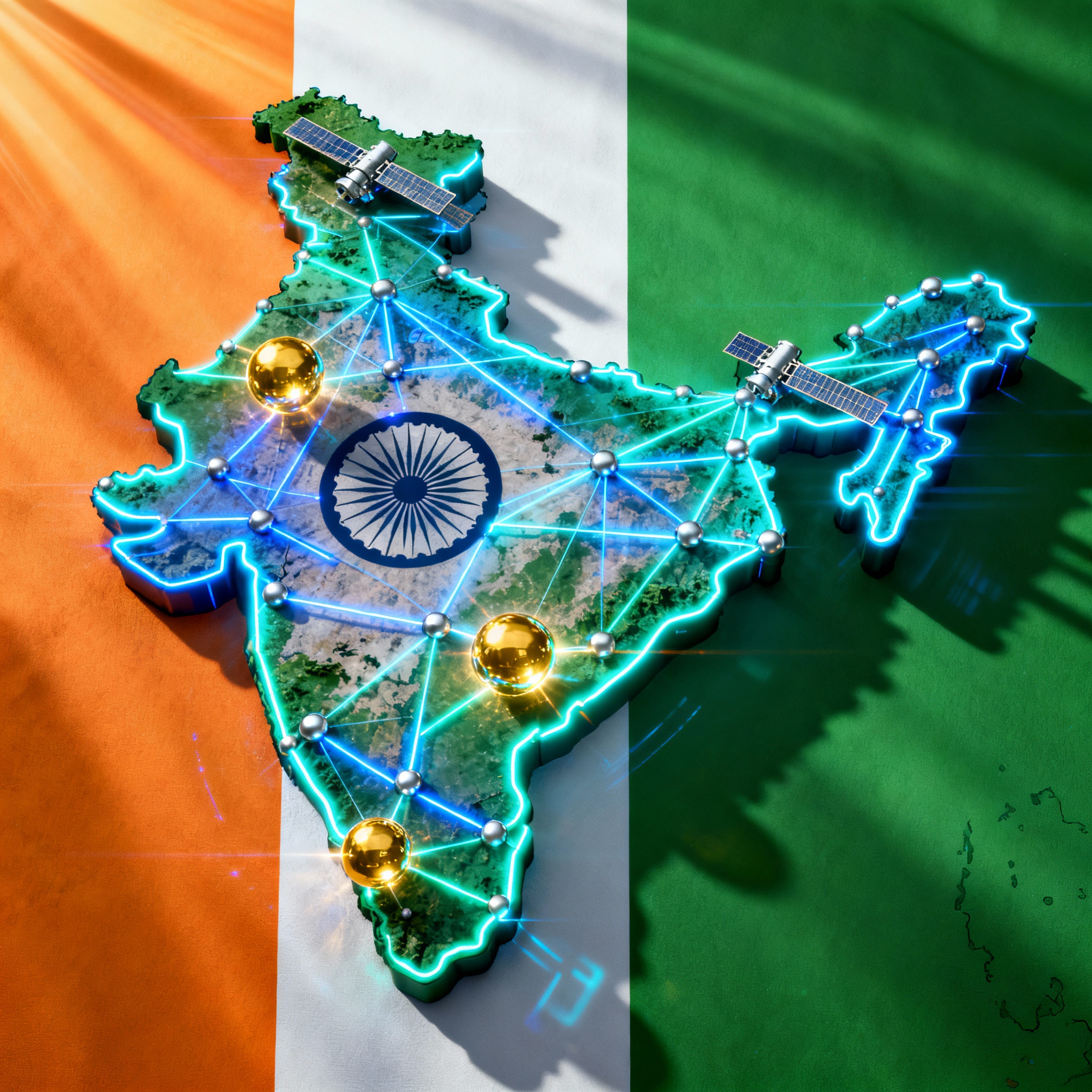
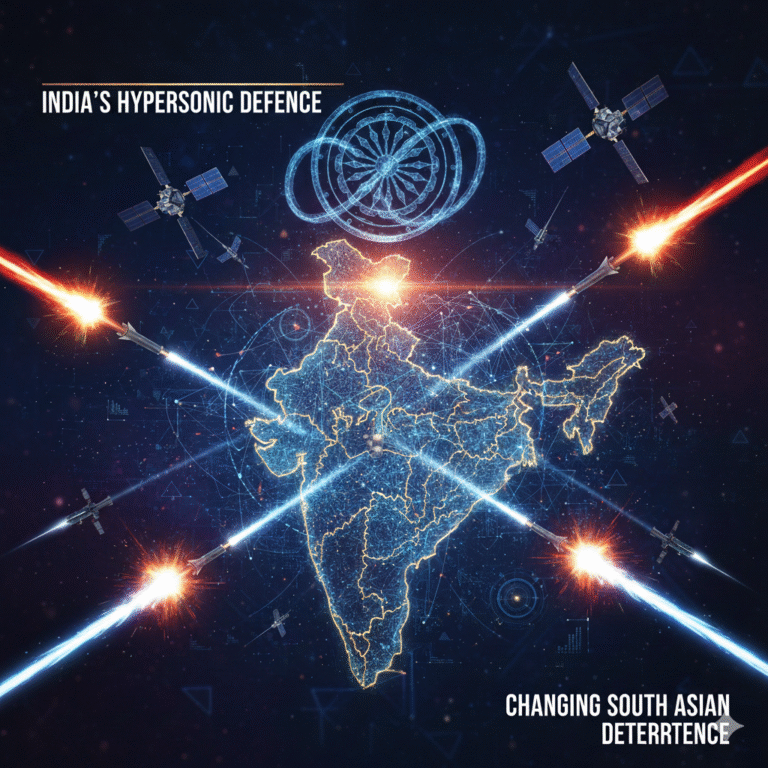








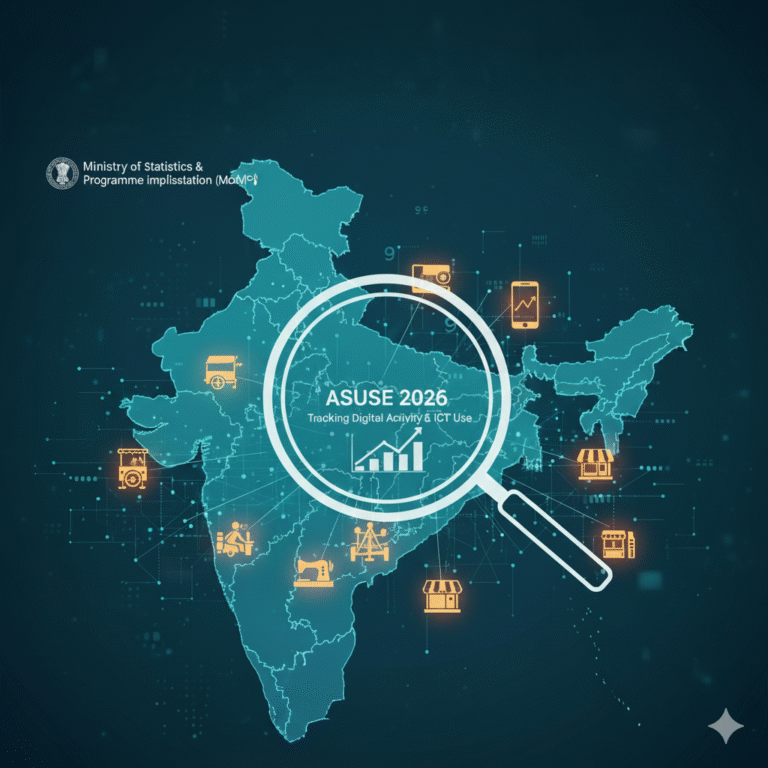
+ There are no comments
Add yours